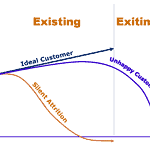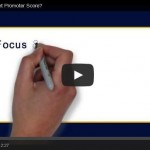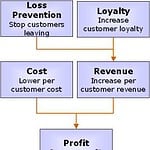Deciding when and how to contact your customers to maximize customer relationships is an ongoing task for every organisation. Getting the delicate balance between too much contact and not enough contact is difficult, and still you need to focus on it every day to get it right.
Right up front, you should invest some time and effort in developing and mapping an effective customer lifecycle journey for each type of customer. This gives you a starting point for contacting your customers in an effective manner.
This can start simple and be built out as you go, but you need to start with a base line work from.
A good customer life cycle journey also needs a good customer contact framework to be successful. A customer contact framework (CCF) is a set of rules and approaches that govern how and when you will contact customers. It takes into account the customer lifecycle journey map but also adds rules for event based marketing activity and wider business contact rules.
Your wider business rules should include (among other things) areas such as not contacting a customer too often and not contacting customers during high profile holiday or public events because the response rates will drop substantially.
You customer contact map should take into account the following broad areas as a minimum:
Customer Onboarding
Customer onboarding is all about building customer relationships during the initial phase after their first purchase of a product or service. We know from experience that this is a critical time in building the customer relationship.
If this phase is done correctly you will enjoy longer customer tenure and higher cross-sell and up-sell rates. We routinely build and prove business cases on this key customer contact showing time and again that it has a very high relative marketing return on investment.
Event based activity
The next step in communicating for maximum impact is to ensure that you track customer activity and intervene when something changes. If you track the customers sales activity in terms of recency, frequency and size of order (monetary), called RFM analysis, it will let you know which customers to contact and when.
For instance a customer that buys every month but has gone two months without a purchase: it may be time to contact them with an offer. Or the customer who suddenly starts purchasing twice the product that they have purchased in the past: it would be a good time to contact them and find out why.
Save teams
Another good, although reactive, time to contact customers is this a Save team. Save teams swing into action when a customer either tells you outright that they want to leave or when you can infer they might be about to leave.
How do you infer a person may be leaving? You need to think about your business but for example banks use the “loan payout request” as an indicator. A person calling a bank and requesting this value is probably looking to make a change to their accounts and you need to be there to make sure that you are included in that discussion.
Save teams are a very specific type of customer service team that has special training and access to special customer offers. We spoken about them before in past posts.












